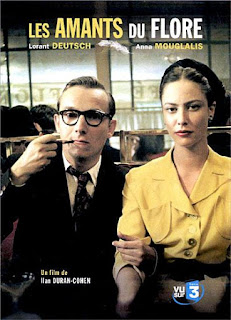Subterranea experienced through the body and the body experienced through Subterranea
| picture by Daniela Ramos Arias |
On the 28th of June 2020 I had the chance to join a very cool workshop in Hordaland Kunstsenter.
The dancer Noam Eidelman
Shatil guided us through a different way of experiencing art.
In the room the
exhibition Subterranea by Lene Baadsvig Ørmen.
Lene’s art was put in relation
to Noam’s art thanks to the initiative of Daniela Ramos Arias, the curator of
the mediation program for Hordaland Kunstsenter.
It was announced that the
the workshop aimed at being a medium through which we could experience Subterranea
and the space where it is installed. But for me, it was much more than that. It was
also, a medium to relate to my own body and seed to invite reflection
regarding the places of human bodies and the function of art.
| picture by Daniela Ramos Arias |
It did not start easy,
because I arrived there with all my prejudices and old habits. My brain was
fighting to be the first one to enter the room again. But this time an unknown
activity was on the way, and my tendency to overthink was going to be
challenged. Noam first invited us to walk around the room for a few minutes and
see the exhibition, collect our first impressions. Then she asked us to stop
and close our eyes. Next, she asked us to try to visualize what we just saw. In
her guidance, she created awareness not only to the pieces of art but to other
elements of and in the room. The walls, the ceiling, the windows, the other
bodies. Noam invited us to move. She gave us directions on how to move, but
without making us feel too constrained. Among her invitations were the
invitation to exploring our bodies becoming heavy and then finding ways to be
light again. She introduced the concept of wind and invited us to move with it.
One of the directions that were more meaningful to me was the one about moving
our focus from the space in the room to the space inside our bodies.
I felt like I had time to
truly arrive in that space, to truly forget what I left behind me. All the
pieces of my life that were not happening at that moment could be paused. The
invitation to let my body exist in that room, in relation to Subterranea and to
Noam’s obsessions as an artist, slowly was accepted by me. At first, just my
feet, then my hair, my legs, and my hands started dancing a few minutes later. At
some moment I realized that I had embraced that invitation as a whole. My body
was no longer simply a vehicle that I was using to carry me to places. I was
seeing with my whole body. At that moment I was in my body. I was my body. I
was in the world in and as my body.
The workshop in Subterranea gave me four gifts. As I
already mentioned [1] it gave me a chance to truly experience art, and not fake
it. Also, [2] it enabled me to let my body see the art. More than that, [3] it
also interfered in how I see my body; and [4] it invited me to re-start thinking
about what does it mean to be a body instead of having a body and why art is
relevant. To make it an even more fruitful experience the workshop ended with us
around a table eating cake and sharing our thoughts about what we had just experienced.
Drinking coffee and eating a banana cake I had time to
listen to what the other women had to say. They mentioned that the workshop
made them more curious, more engaged, less bored, more aware, more playful,
more present… Listening to them I felt understood. I was not the only one to
had experienced in the past that heaviness born from “pretending” that you
understand the piece of art. Perhaps art is not something that one might “understand”,
but instead, experience, appreciate.
For a long while, I held the fragile certainty that art
should have a social function. In the sense that it should be about social
problems like inequality and that it should help us to see and understand such
issues. Then, this summer I joined a philosophical workshop on art and
otherness. A recurrent argument there was that art is not supposed to teach us
anything. They insisted that it is dangerous and useless to engage with art in
this way. They also argued that from that does not follow that art is useless.
Art has a fundamental function in helping us to think and to create (including
to create a better world). Art serves to remove us from our everyday places.
Art has the power to enable us to experience time in a different way. For a
moment, while we experience art, we are removed from our functioning mode. Such
experience creates space inside of ourselves. It makes it possible for us to remember
that we are more than machines that function from 8.00 to 17.00 and that need
maintenance. Art then has the power to interfere in how we relate to ourselves
and to the world, and because of it, it has the potential of helping us change
the world. During the workshop in Subterranea, such ideas somehow resonated inside
of me. Perhaps because for the first time in a long while I focused on
experiencing art instead of understanding it.
For today that is all. I will be writing more about points
3 and 4 in the future.
Hugs and until
next time



Comments
Post a Comment